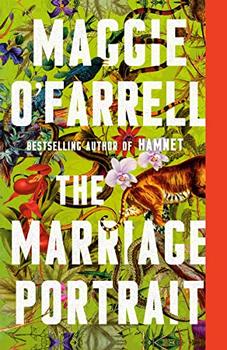Summary | Excerpt | Reviews | Beyond the book | Read-Alikes | Genres & Themes | Author Bio

Mary Sharratt's Revelations is a fictionalized account of the life of English mystic Margery Kempe (c.1373–after 1438). Following the birth of her first child, Kempe experienced a breakdown of sorts, during which, she claimed, she was haunted by visions of horrible demons who encouraged her to kill herself. After months of torment, Christ appeared to her, assuring her she was not damned. Her mind was immediately calmed and the demons banished, and she went on to have visions of her savior for the rest of her life. She spent the ensuing years as an obedient wife, ultimately having 14 children despite attempts to discourage her husband's advances. She nearly died giving birth to her last child, and when her spouse didn't seem inclined to modify his behavior, she decided to take a vow of chastity and embark on a pilgrimage to Jerusalem. Revelations follows this remarkable woman's life, travels and encounters with the authorities over charges of heresy.
The story is told through first-person narration from Kempe's point of view, which seems fitting given the author's main source material: The mystic dictated her life's story in the 1430s, and the resulting Book of Margery Kempe is thought by some to be the first autobiography in English. In Sharratt's hands, Kempe becomes a three-dimensional person. I had mixed feelings about the protagonist in a way that demonstrates how well this character is crafted, admiring Kempe's pluck while also finding her obnoxious at times. I was never quite sure if her devotion to Christ was genuine or a pretense that allowed her to live on her own terms. At times she comes across as a bit batty, at others overbearing; she prevaricates, is a bit lascivious around the edges. Above all, she's determined to remain independent. I absolutely loved her ambiguities and contradictions.
Although the story is placed within a religious framework, the author doesn't spend much time expanding on Kempe's views of Christian devotion. Instead, the book focuses on her physical journeys, and as a result it often reads like a travel diary. I found this approach fascinating; I particularly enjoyed the realistic emphasis on the rigors of medieval travel — rather than its spiritual rewards — and explanation of how Kempe's adventures impacted her as she returned to England. She remarks, "When pilgrims first set off on their jubilant and perilous journey to holy places, nobody ever warns them what an ordeal it is to come home. My travels had utterly transformed me."
I read historical fiction not only to learn about an event or person, but to pick up detail about the time period. The author hits the mark here; she slips in just enough information to be entertaining, but not so much that the story gets bogged down in description. At one point Kempe mentions she was given permission to receive the Eucharist every Sunday, noting this to be "a rare privilege, as most lay folk took communion only once a year, on Easter." Another part mentions a visit to a stationer, where various scripts, papers and bindings are on display so those desiring a book can select its exact materials — the printing press wasn't yet invented and so books were hand-crafted works of art. These instances and many others throughout the novel added to my understanding of the era and were a definite highlight.
Sharratt's excellent characterization is unfortunately limited to Kempe herself; almost every other person is drawn without nuance. Those who opposed her, in particular, are painted with an enormously broad brush. I literally couldn't stop thinking about the mustache-twirling cartoon character Snidely Whiplash when reading about Kempe's prosecutor, the Duke of Bedford. This is a relatively large flaw, but the other details are so well rendered that it mostly didn't impact my high opinion of the work.
I have to say, though, that I'm also disappointed in Revelations' jacket description, and feel it does the book a disservice. First, readers are led to believe this is the story of two women, not one. While Kempe does indeed meet Julian of Norwich and adopts the woman's philosophy, Julian is a minor character and features only briefly; the narrative stays laser-focused on Kempe. Perhaps more concerning, the description compares Revelations to Elizabeth Gilbert's book Eat, Pray, Love, but I'm at a loss to find parallels between the two. Unlike Gilbert's, Kempe's journey isn't one of self-discovery — she already knows who she is and what she believes — and I think it unlikely that those who formed an emotional or spiritual connection to Eat, Pray, Love will develop the same love for Revelations.
Looking beyond those complaints, readers looking for a top-notch work of historical fiction should definitely put Revelations on their shortlist. Book groups, too, will certainly find it offers many topics for discussion, particularly surrounding gender roles and expectations.
![]() This review
first ran in the May 19, 2021
issue of BookBrowse Recommends.
This review
first ran in the May 19, 2021
issue of BookBrowse Recommends.

If you liked Revelations, try these:

by Allegra Goodman
Published 2025
A young woman and her lover are marooned on an island in this breathtaking saga, an epic story of love, faith, and defiance from the bestselling author of Sam.

by Maggie O'Farrell
Published 2023
The author of Hamnet - New York Times bestseller and National Book Award winner - brings the world of Renaissance Italy to jewel-bright life in this unforgettable portrait of the captivating young duchess Lucrezia de' Medici as she makes her way in a troubled court.
Your guide toexceptional books
BookBrowse seeks out and recommends the best in contemporary fiction and nonfiction—books that not only engage and entertain but also deepen our understanding of ourselves and the world around us.